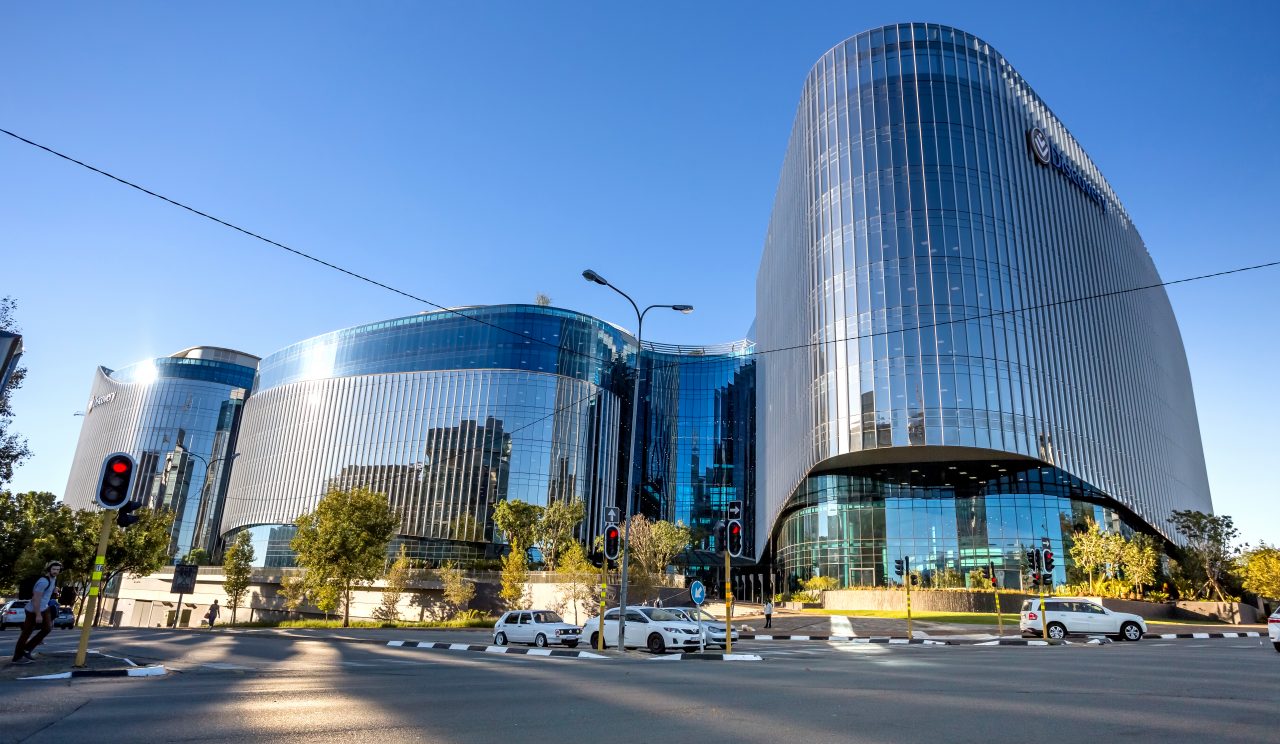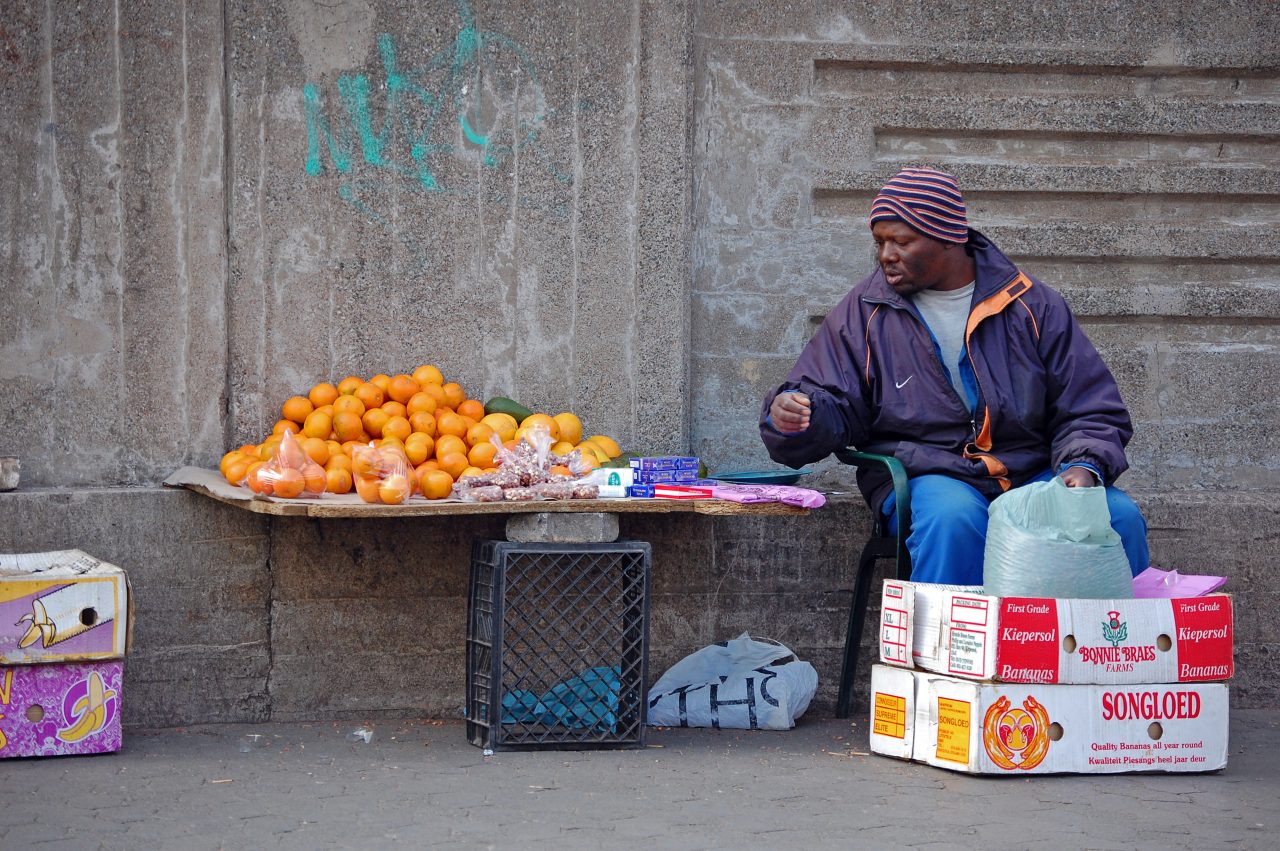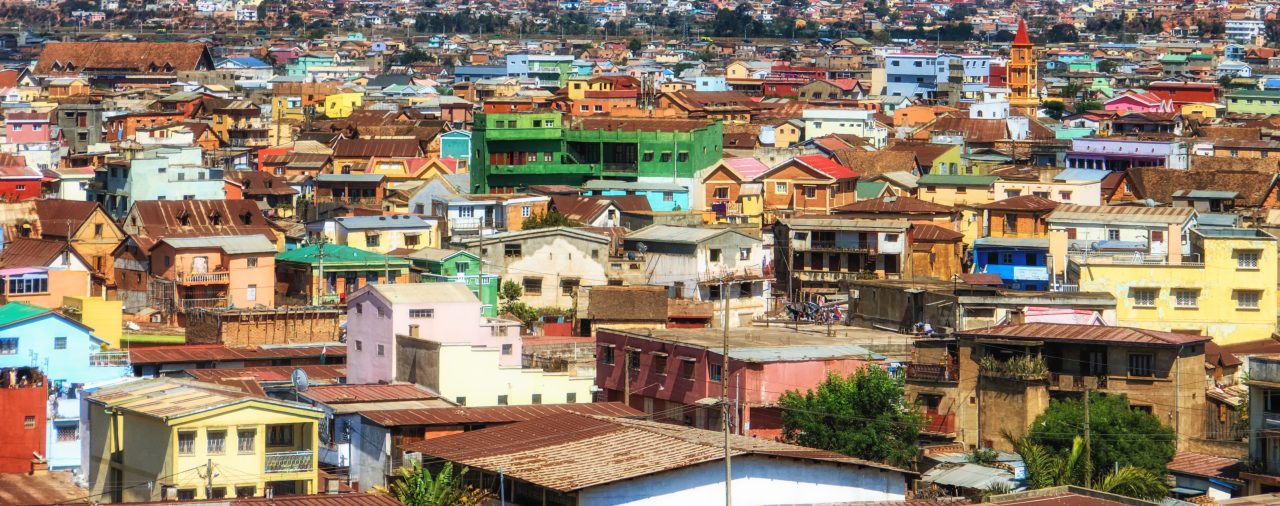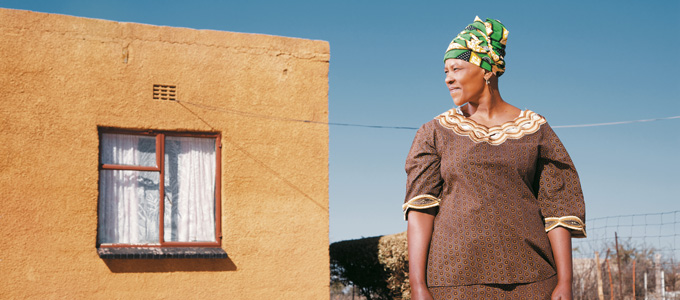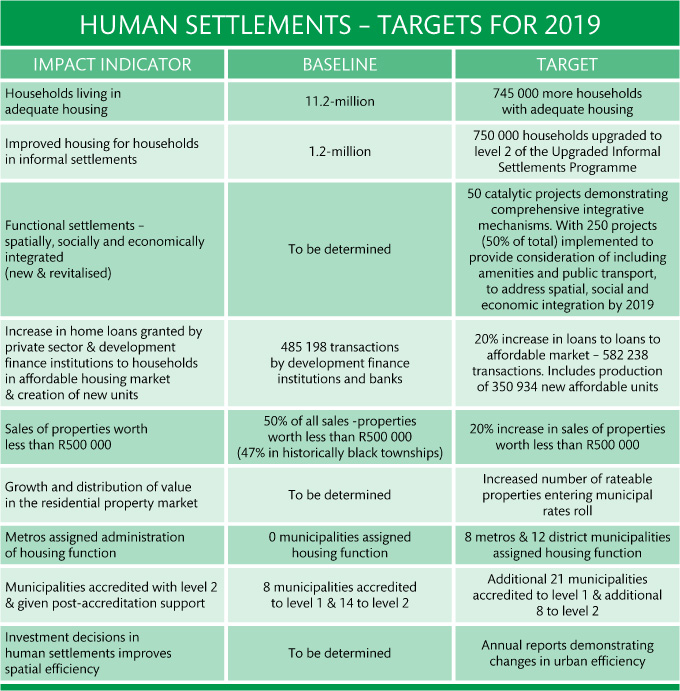Join GlobalBizzNetwork and start your international business network today.
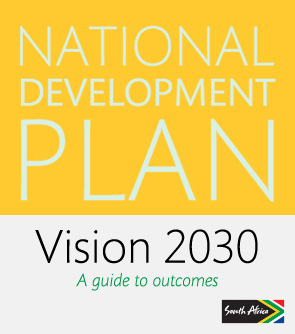
Transformation of settlements
The vision
The National Development Plan’s vision is that, in 2030, human settlements in South Africa have been transformed into equitable and efficient spaces with citizens living in close proximity to work with access to social facilities and necessary infrastructure.
Apartheid spatial patterns have been broken, with significant advances made towards retrofitting existing settlements offering the majority of South Africans access to adequate housing and affordable services in better living environments. The homebuyers’ market is more equitable and functional.
By 2030:
• South Africa has a strong and efficient spatial planning system, well integrated across the spheres of government.
• All informal settlements have been upgraded and are positioned on suitable, well-located land.
• More people live closer to their places of work.
• Public transport is of good quality.
• There are more jobs in or close to dense, urban townships.
The challenges
Apartheid planning consigned the majority of South Africans to places far away from work, where services could not be sustained, and where it was difficult to access the benefits of society and participate in the economy.
A great deal of progress has been made since 1994, but South Africa is far from achieving the Reconstruction and Development Programme goals of “breaking down apartheid geography through land reform, more compact cities, decent public transport and the development of industries and services that use local resources and/or meet local needs”.
Despite reforms to the planning system, colonial and apartheid legacies still structure space across different scales.
Many people still live in poverty traps, including the former homelands, where less than 30% of adults are employed – compared to 55% in the cities). One in two households depends on social grants or remittances, compared with one in six in cities.
Logistics and communication lines are long because of sheer scale, making infrastructure maintenance difficult and movement of goods and people costly.
Over two decades into democracy, towns and cities remain fragmented, imposing high costs on households and the economy. The housing market’s enormous price cliffs act as barriers for most black South Africans to progress up the property ladder. New, subsidised settlements have created homes for nearly 4-million households, but are often too far from economic opportunities.
Action required
There is an urgent need for an urban development strategy to make urban spaces liveable, equitable, sustained, resilient and efficient – able to support economic growth and social cohesion.
The National Development Plan mandates a series of interconnected interventions required to address economic solutions, institutional reforms, change to land management systems and infrastructure investment.
Apartheid spatial patterns must be broken, replaced with a more coherent and inclusive approach to development and urban planning. The fractured housing market requires significant reform.
Specific action includes:
• Reforms to the current planning system for improved coordination.
• Develop a strategy for densification of cities and resource allocation to promote better located housing and settlements.
• Substantial investment to ensure safe, reliable and affordable public transport.
• Introduce spatial development framework and norms, including improving the balance between location of jobs and people.
• Conduct a comprehensive review of the grant and subsidy regime for housing with a view to ensure diversity in product and finance options that would allow for more household choice and greater spatial mix and flexibility. This should include a focused strategy on the housing gap market, involving banks, subsidies and employer housing schemes.
• National spatial restructuring fund, integrating currently defused funding.
• Establish a national observatory for spatial data and analysis.
• Provide incentives for citizen activity for local planning and development of spatial compacts.
• Introduce mechanisms that would make land markets work more effectively for the poor and support rural and urban livelihoods.
Key medium-term goals for 2019
South Africa’s Medium Term Strategic Framework (2014 to 2019) identifies the following sub-outcomes achieve sustainable human settlements and improved quality of household life.
• Adequate housing and improved quality living environments
• A functionally equitable residential property market
• Enhanced institutional capability for effective coordination of spatial investment decisions
Key medium-term targets for 2019
South Africa’s Medium Term Strategic Framework (2014 to 2019) identifies the following targets to achieve sustainable human settlements and improved quality of household life:
Find out more about the National Development Plan and how to contribute to it: Click here and read the full story on Brand South Africa and download all the documents.
